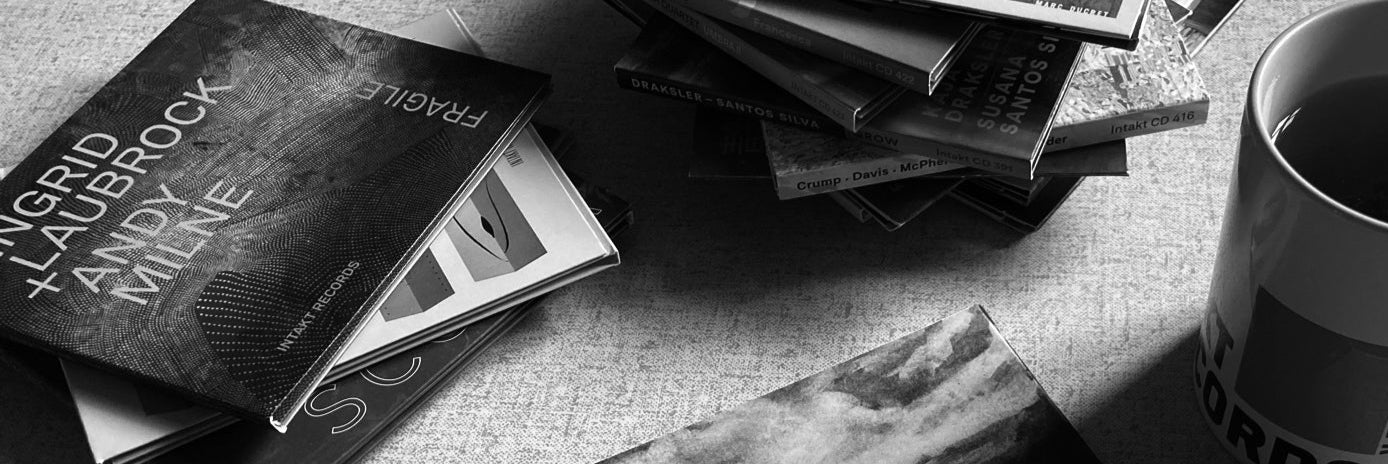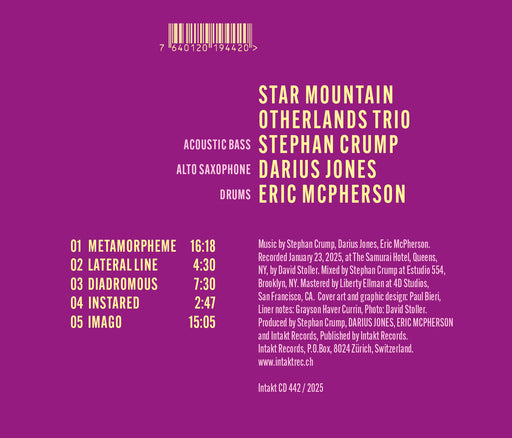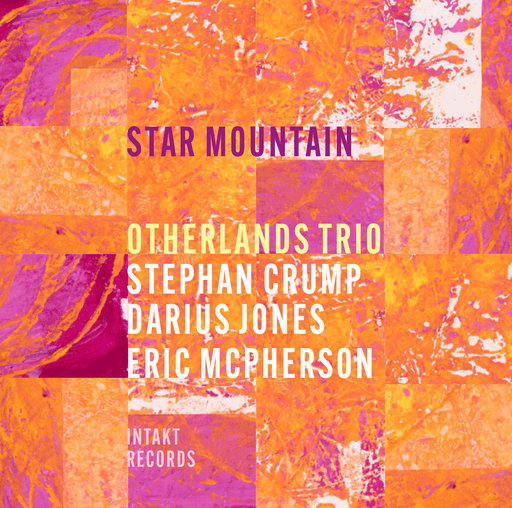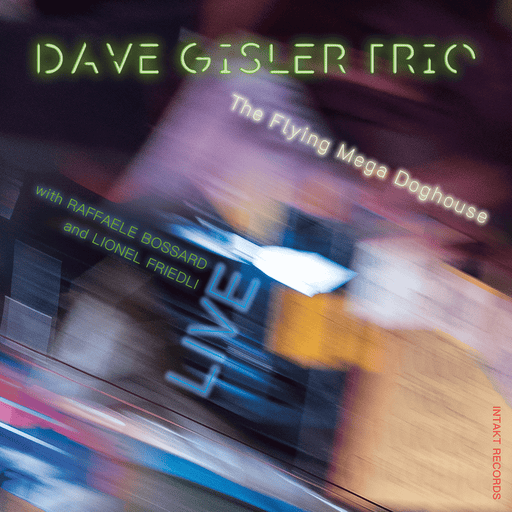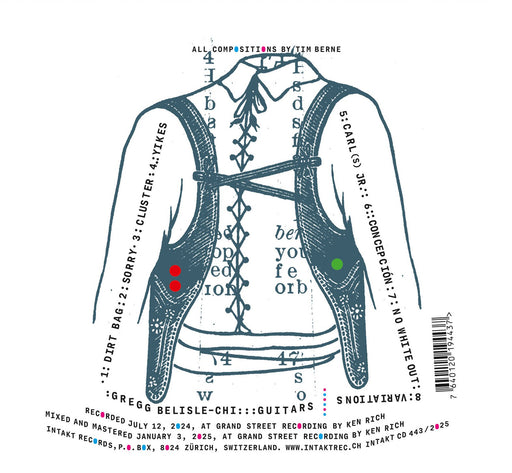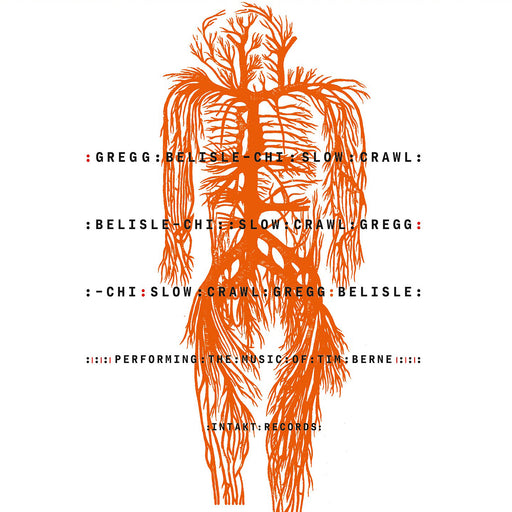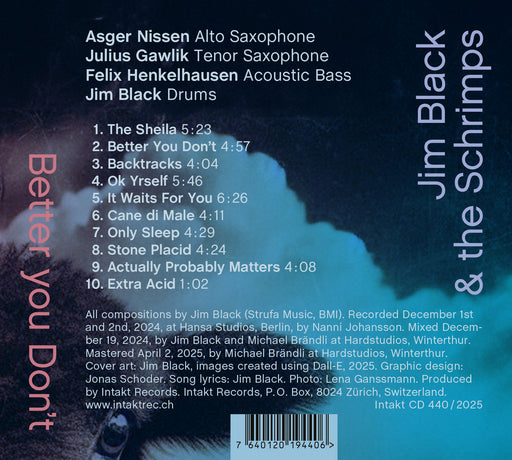Szwajcarska pianistka i kompozytorka Sylvie Courvoisier od ponad dwóch dekad jest jedną z najważniejszych postaci współczesnego jazzu i znajduje się w samym centrum nowojorskiej sceny muzycznej. Właśnie otrzymała prestiżową Szwajcarską Nagrodę Główną Muzyki 2025, a teraz prezentuje swój najnowszy album nagrany w duecie z legendarnym Wadadą Leo Smithem. Album „Angel Falls” jest to kontynuacja koncepcji znanych już w solowego albumu „To Be Other-Wise” oraz nastrojowego, wielowarstwowego albumu sekstetu „Chimaera”.
Sylvie Courvoisier jest pianistką, kompozytorką oraz znakomitą improwizatorką. Urodzona w Lozannie w Szwajcarii, w 1998 roku przeprowadziła się do Nowego Jorku. Koncertowała i nagrywała z Johnem Zornem, Wadadą Leo Smithem, Joey’em Baronem, Ellery Eskelinem, Natem Wooley’em, Fredem Frithem, Yusefem Lateefem, Timem Berne, Joëlle Léandre, Erikiem Friedlanderem, Butchem Morrisem, Tony’m Oxley’em, Herbem Robertsonem, Tomaszem Stańko oraz z Ikue Mori i Susie Ibarra (w trio Mephista). Pianistka zrealizowała kilkanaście autorskich albumów oraz kilkadziesiąt jako artystka zapraszana do projektów innych muzyków. Jej nagrania znajdują się zarówno w katalogu ECM Records, Tzadik Records (Johna Zorna), jak i szwajcarskiej oficyny Intakt Records. Jest najciekawsze sesje to m.in. „Time Gone Out” – duet z Markiem Feldmanem, „D’Agala Sylvie Courvoisier Trio”, „Crop Circles”- duet z Mary Halvorson, „Miller’s Tale”- kolektywny kwartet z Evanem Parkerem, Ikue Mori i Markiem Feldmanem, „Salt Task” – trio z Chrisem Corsano i Natem Wooley’em. Od 1998 roku Sylvie Courvoisier regularnie występuje solo lub w duecie ze skrzypkiem (i mężem) Mark’em Feldmanem. Od 2013 roku jest liderem własnego Trio z Drew Gressem (kontrabas) i Kenny’m Wollesenem (instrumenty perkusyjne). Album „D’Agala Sylvie Courvoisier Trio” został doceniony przez krytyków i znalazł się na listach najlepszych albumów roku New York Times i Los Angeles Times. Pianistka jest także współliderem Sylvie Courvoisier/Mark Feldman Quartet ( z Drew Gressem i Tomem Rainey’em), VWCR Quartet (z Kenem Vandermarkem, Natem Wooley’em i Tomem Rainey’em) oraz TISM Quartet z Tomem Raineyem, Ingrid Laubrock i Markiem Feldmanem. Od 2017 roku gra także w duecie z Mary Halvorson a od 2000 roku jest członkiemMephista– improwizującego kolektywnego trio z Ikue Mori i Susie Ibarra. Sylvie Courvoisier regularnie występuje w wielu zespołach i projektach kompozytorskich Johna Zorna, takich jak, „Cobra and the Masada” oraz „Bagatelle Marathon”. Od 2010 roku jest pianistką i kompozytorką w projekcie „La Curva” tancerza flamenco Israela Galvana, z którym zrealizowała ( w 2018 roku) „Cast-aNet” – z Evanem Parkerem, Markem Feldmanem i Ikue Mori a w 2020 roku „La Consagración de la primavera” z Cory’m Smythem, wykonując „Święto wiosny” Igora Stravinky’ego i autorskie „Spectro” na dwa fortepiany i taniec.
Legendarny Ishmael Wadada Leo Smith jest jedną z najbarwniejszych i najważniejszych postaci improwizowanego jazzu. Ostatnie lata to najpiękniejszy okres w życiu charyzmatycznego artysty, który jest ozdobą najważniejszych festiwali, realizuje ciekawe projekty oraz nagrywa albumy dla prestiżowych oficyn ( od ECM po Intakt i TUMI). 83-letni Wadada Leo Smith to artysta niezwykle aktywny, współautor sukcesów i wspaniałych nagrań Mariona Browna, Anthony’ego Braxtona, koncertów z Donem Cherrym, Cecil Taylorem, Lesterem Bowiem, Johnem Zornem, Charliem Hadenem, Jack DeJohnette, Billem Laswellem. W swoim dorobku ma ponad 60 albumów nagranych dla najbardziej liczących się wytwórni. Większość sesji to rodzaj specyficznych suit i utworów budowanch impresjami i skojarzeniami z muzyką wielkich free-jazzu oraz nowoczesnych, harmolodycznych improwizacji.
Jak odległa jest dzisiaj muzyka Wadada Leo Smith’a od harmolodic-jazzu Colemana trudno definitywnie określić. Zdaje się, że rozgrywa się także i teraz w blasku brzmień albumu „Angel Falls” bowiem Wadada Leo Smith to jedna z najbarwniejszych i najważniejszych postaci improwizowanego jazzu. Jest niezwykle aktywnym muzykiem chicagowskiego AACM, improwizatorem, kompozytorem, trębaczem, multiinstrumentalistą, etnomuzykologiem, działaczem na rzecz praw człowieka Ostatnia lata to najpiękniejszy okres w życiu kontrowersyjnego artysty: jest ozdobą najważniejszych festiwalu, realizuje ciekawe projekty oraz nagrywa albumy dla prestiżowych oficyn. Ten wyjątkowy muzyk, zawsze podąża za duchem czasu, celebrując muzyczną różnorodność i kreatywność, a także sprzeciwiając się wszelkim etykietkom. W ciągu ostatnich 50 lat przyczynił się do rozwoju muzyki w różnych kontekstach. Album „Angel Falls” emanuje magią muzycznej wolności, zdumiewającą bezpośredniością i urzeka olśniewającym zmysłem architektury dźwięku.
„ Angel Falls” jest sesją, w której arcymistrz Wadada Leo Smith, wspomagany i podżegany przez żarliwą ciekawość Sylvie Courvoisier angażuje słuchacza jako aktywnego twórcę prawdziwie błogiej, pięknej muzyki. To magia, która nie zdarza się czę...



